Mission
Since its inception 19 July 1948, Naval Beach Group One (NBG-1) and its component commands have participated in a variety of amphibious operations. From the early years of assaults during the Korean and Vietnam conflicts to the modern and technically sophisticated amphibious operations in Somalia and Iraq, the men and women of NBG-1 have served throughout the Pacific and Indian Oceans in support of US policy abroad.
Commander, Naval Beach Group ONE (CNBG-1) functions under two distinct missions. During amphibious assaults, he provides personnel to support and operate causeway lighterage, LCACs, LCUs, buoyant ship-to-shore bulk fuel systems, beach traffic control, and beach salvage equipment. The second mission is under the Maritime Preposition Force (MPF) concept which uses the equipment and supplies prepositioned on board forward deployed Maritime Prepositioning ships (MPS). Joining forces with the Marine Expeditionary Brigade (MEB), CNBG-1 forms and commands the Naval Support Element (NSE) and is airlifted into an objective area to establish camp support, conduct ship-to-shore movement, beach party operations and debarkation operations in support of the offload of each MPF ship.
CNBG-1 is also responsible for conducting Amphibious Specialty Training (PHIBSPECTRA) for all US Pacific Fleet amphibious ships. The PHIBSPECTRA Team provides in-depth training in well deck operations to prepare Expeditionary Strike Group (ESG) ships for deployment to the Western Pacific and Indian Oceans.
History
The need for a single organization dedicated to the support of amphibious operations was recognized as a result of experience gained during the island-hopping campaigns of World War II. The decision to consolidate amphibious assault assets led to the establishment of NBG-1 in July 1948.
Korean – Vietnam service
In 1950, Detachments of NBG-1 participated in amphibious assaults at Inchon and Pohang, Korea, and shortly thereafter in the evacuation of troops from Hungnam and Inchon. Late in 1954, another NBG-1 Detachment assisted Commander Task Force 90 in the withdrawal of French Union Military Forces and 300,000 Vietnamese refugees from Haiphong, French Indochina during Operation Passage to Freedom. NBG-1 Detachments took part in the evacuation of the Chinese Nationalist Tachen Islands in 1955. NBG-1 provided equipment and personnel to assist in a scientific expedition to Danger Island in the South Pacific in conjunction with the International Geophysical Year in 1958. Since 1965, NBG-1 elements participated in many amphibious landings in Vietnam, including landings at Chu Lai, Da Nang, and near the DMZ in the Huế area. Assistance in the withdrawal of US Marine Corps personnel and equipment from Vietnam and their offload in CONUS was provided. In 1975, NBG-1 Units actively participated in the withdrawal and evacuation of Vietnamese citizens.
Recent service
In recent years, detachments from NBG-1 have participated in the Gulf War and Iraq War in the Persian Gulf, Operation Restore Hope, Operation United Shield, in Somalia. NBG-1 and its component commands engaged in supporting amphibious task force commanders in the THIRD, FIFTH and SEVENTH Fleets during Operation Unified Assistance, the humanitarian/disaster relief efforts after the tsunami that destroyed the Asian Pacific area in 2004, earthquake relief to Pakistan in 2005, wildfire assistance in Southern California, and Operation Tomodachi in Japan.
Today, NBG-1 trains detachments to embark in amphibious ships, as part of an Assault Echelon, as well as deploying as the core of the Naval Support Element during Assault Follow-On Echelon operations. NBG-1 routinely participates in Fleet and Theater exercises (RIMPAC, Foal Eagle, Cobra Gold, CARAT, C/JLOTS, and Talisman Saber) and provides a wide variety of support services at NAB, Coronado. Throughout an illustrious history, from combat operations to humanitarian assistance and disaster relief, NBG-1 has seamlessly operated as the unifying force of Navy and Marine Corps Team, epitomizing the traditional amphibious force motto, "United We Land”, with skill, professionalism, and dedication.

USS New Orleans (LPH-11) was an Iwo Jima-class amphibious assault ship in the United States Navy. She was the third Navy ship to be so named, and is the first named for the Battle of New Orleans, which was the last major battle of the War of 1812.

USS Tortuga (LSD-26) was a Casa Grande-class dock landing ship in the United States Navy. She was the first Navy ship to be named for the Dry Tortugas, a group of desert coral islets 60 miles west of Key West, Florida, which were discovered in 1513 by Spanish explorer Ponce de Leon.
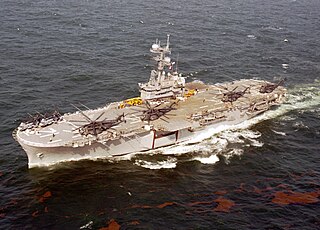
USS Inchon (LPH/MCS-12) was an Iwo Jima-class amphibious assault ship of the United States Navy in service from 1970 to 2002. Following a major fire, she was laid up and sunk as a target in 2004.

United States Navy Explosive Ordnance Disposal technicians render safe all types of ordnance, including improvised, chemical, biological, and nuclear. They perform land and underwater location, identification, render-safe, and recovery of foreign and domestic ordnance. They conduct demolition of hazardous munitions, pyrotechnics, and retrograde explosives using detonation and burning techniques. They forward deploy and fully integrate with the various Combatant Commanders, Special Operations Forces (SOF), and various warfare units within the Navy, Marine Corps, Air Force and Army. They are also called upon to support military and civilian law enforcement agencies, as well as the Secret Service.
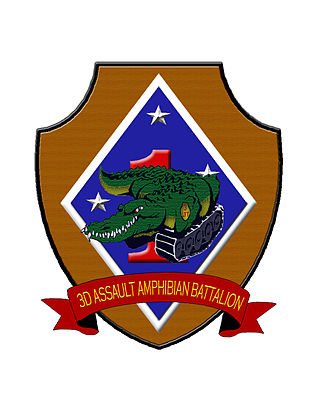
3rd Assault Amphibian Battalion is one of two active duty assault amphibian battalions in the United States Marine Corps. The battalion's primary weapon system is the Amphibious Assault Vehicle or AAV. The AAV is a 27.5-ton armored vehicle that carries up to 21 combat-loaded Marines and is armed with the UGWS, which mounts a .50 cal (12.7 mm) M2HB machine gun and a Mk-19 40 mm grenade launcher. The battalion is also equipped with the Amphibious Combat Vehicle or ACV, a rather new variant to the USMC’s amphibious armament which will replace the AAV in years to come. The AAV and ACV are the only armored vehicles in the U.S. inventory that are fully capable of operations both on land and in the ocean. The battalion is part of the 1st Marine Division and the I Marine Expeditionary Force. The unit is based in Camp Pendleton, California.

USS Eldorado (AGC-11) was a Mount McKinley-class amphibious force command ship, named after a mountain range in Nevada. The ship was designed as an amphibious force flagship, a floating command post with advanced communications equipment and extensive combat information spaces to be used by the amphibious forces commander and landing force commander during large-scale operations.
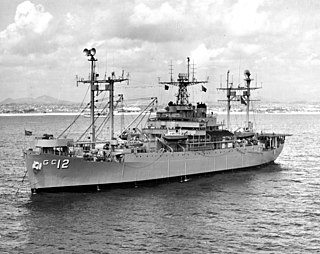
USS Estes (AGC-12) was a Mount McKinley-class amphibious force command ship. It is officially named after "A mountain peak and national park in Colorado."

Naval Amphibious Base Coronado is a US naval installation located across the bay from San Diego, California. The base, situated on the Silver Strand, between San Diego Bay and the Pacific Ocean, is a major Navy shore command, supporting over 30 tenant commands, and is the West Coast focal point for special and expeditionary warfare training and operations. The on‑base population is 5,000 military personnel and 7,000 students and reservists. The base is one of the eight components of Naval Base Coronado (NBC).
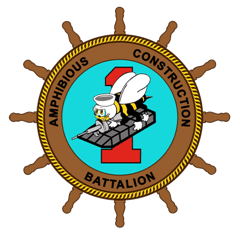
Amphibious Construction Battalion ONE is an amphibious construction battalion in the United States Navy based in Coronado, California, and last in type unit. Amphibious Construction Battalion TWO was its sister unit based in Little Creek, Virginia.

Expeditionary Strike Group 3 is an expeditionary strike group (ESG) of the U.S. Navy. Expeditionary strike groups combine the capabilities of surface action groups, submarines, and maritime patrol aircraft with those of Amphibious Ready Groups for deployment and maintaining staff proficiencies to provide fleet commanders with a highly flexible, ready fly-away unit. It is capable of projecting expeditionary striking power in the maritime, littoral, and inland environs in support of U.S. national interests.
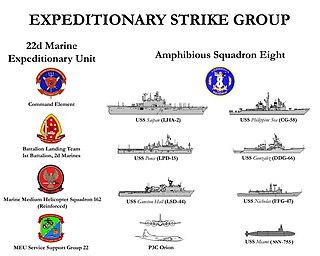
In the United States Navy, the expeditionary strike group (ESG) is a coordinated group of surface ships, aircraft, submarines, and other naval assets. In contrast to carrier strike groups (CSGs), which emphasize air power and are led by a supercarrier, ESGs are strongly suited for amphibious warfare and are led by an amphibious assault ship. The ESG concept was introduced in the early 1990s, based on the Naval Expeditionary Task Force. The U.S. Navy fields nine expeditionary strike groups.

USS Henrico (APA-45) was a Bayfield-class attack transport that served with the United States Navy in World War II, and subsequently in the Korean War, Cold War and Vietnam War.
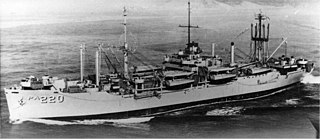
USS Okanogan (APA/LPA-220) was a Haskell-class attack transport that saw service with the US Navy in World War II, the Korean War and the Vietnam War. She was of the VC2-S-AP5 Victory ship design type and named after Okanogan County, Washington.
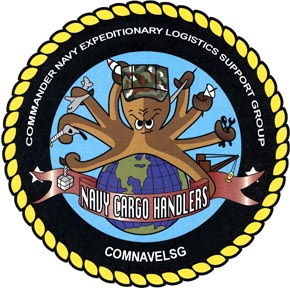
The Navy Expeditionary Logistics Support Group (NAVELSG) is a United States Navy echelon IV component of Navy Expeditionary Combat Command, delivering logistics capabilities with active and mobilization-ready Reserve Force personnel and equipment to theater commanders.

USS Mount Vernon (LSD-39) was an Anchorage-class dock landing ship of the United States Navy. She was the fifth ship of the U.S. Navy to bear the name. She was built in Massachusetts in 1972 and homeported in Southern California for 31 years until being decommissioned on 25 July 2003. Mount Vernon acted as the control ship for the cleanup of the Exxon Valdez oil spill. In 2005, she was intentionally destroyed off the coast of Hawaii as part of a training exercise. USS Mount Vernon also appeared in the Season 7 episode 19 of The Love Boat when they visited Hong Kong.

Expeditionary Strike Group SEVEN/Task Force 76 is a United States Navy task force. It is part of the United States Seventh Fleet and the USN's only permanently forward-deployed expeditionary strike group. It is based at the White Beach Naval Facility at the end of the Katsuren Peninsula in Uruma City, Okinawa, Japan.

Assault Craft Unit ONE, (ACU-1) is a Pacific Ocean Maritime Prepositioning Force in the United States Navy operated under Naval Beach Group ONE out of Naval Amphibious Base (NAB) Coronado with a Forward Detachment in Sasebo, Japan. ACU-1's force consists of Landing Craft Utility (LCU) boats, Landing Craft Mechanized (LCM), Mark 8 boats, and Maritime Prepositioning Force Utility Boats (MPFUBs). The sister unit of ACU-1 is Assault Craft Unit 2 in Naval Amphibious Base Little Creek, Virginia.

Assault Craft Unit TWO (ACU-2) is an Atlantic Ocean Maritime Prepositioning Force in the United States Navy operated under Naval Beach Group Two out of Naval Amphibious Base Little Creek, Virginia. ACU-2's force consists of Landing Craft Utility boats (LCU), Landing Craft Mechanized, Mark 8 boats (LCM), and Maritime Prepositioning Force Utility Boats (MPFUB). The sister unit of ACU-2 is Assault Craft Unit 1 in Naval Amphibious Base Coronado.
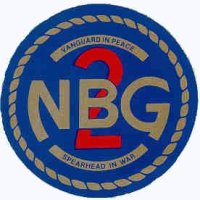
Naval Beach Group Two, (NBG-2) is a United States Navy amphibious unit based at Naval Amphibious Base Little Creek, Virginia Beach, Virginia. Naval Beach Group One is its sister unit based in Naval Amphibious Base Coronado in Coronado, California.
Naval Beach Unit Seven, (NBU-7) is a United States Navy amphibious unit based at United States Fleet Activities Sasebo in Sasebo, Japan.



















